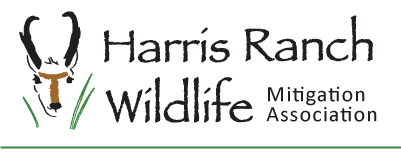
- Home
- Great Blue Heron
Great Blue Herons
Great blue herons (Ardea herodias) can be found on freshwater and brackish marshes, along lakes, rivers, bays, lagoons, ocean beaches, fields, and meadows. In Idaho, the species follows major watercourses. Herons build their nests in trees, sometimes in shrubs, and rarely on the ground. They nests in colonies (or rookeries). Colony size can vary from few pairs to hundreds of pairs; a colony may be displaced by Bald Eagles.
Individuals usually forage while standing in water, but will also forage in fields or drop from air (or perch) into water. In Idaho, some herons are year-round residents while others are breeders or transients (Karl 2000). The species is the most common and widely distributed colonial waterbird in Idaho. This highly watchable species nests in the vicinity of and forages within Harris Ranch. A local rookery exists on the edge of the Boise River, southwest of Harris Ranch and across the river (south bank), near the Park Center Bridge. Great blue herons have been observed using the existing wetland areas and open pastures of Harris Ranch to forage.
Individuals usually forage while standing in water, but will also forage in fields or drop from air (or perch) into water. In Idaho, some herons are year-round residents while others are breeders or transients (Karl 2000). The species is the most common and widely distributed colonial waterbird in Idaho. This highly watchable species nests in the vicinity of and forages within Harris Ranch. A local rookery exists on the edge of the Boise River, southwest of Harris Ranch and across the river (south bank), near the Park Center Bridge. Great blue herons have been observed using the existing wetland areas and open pastures of Harris Ranch to forage.